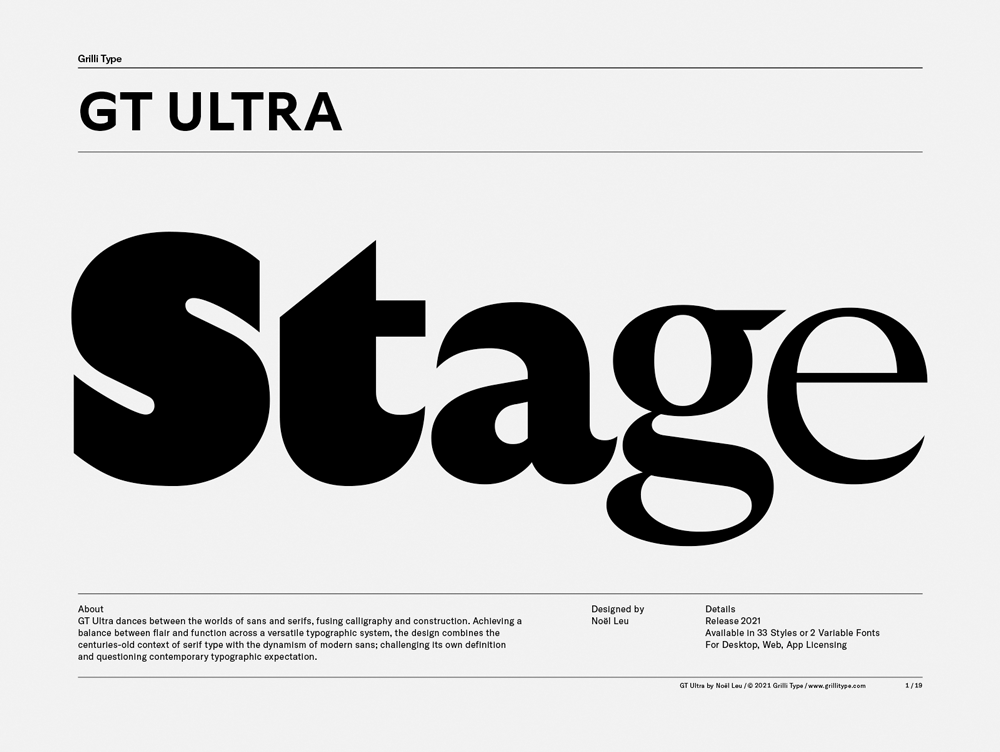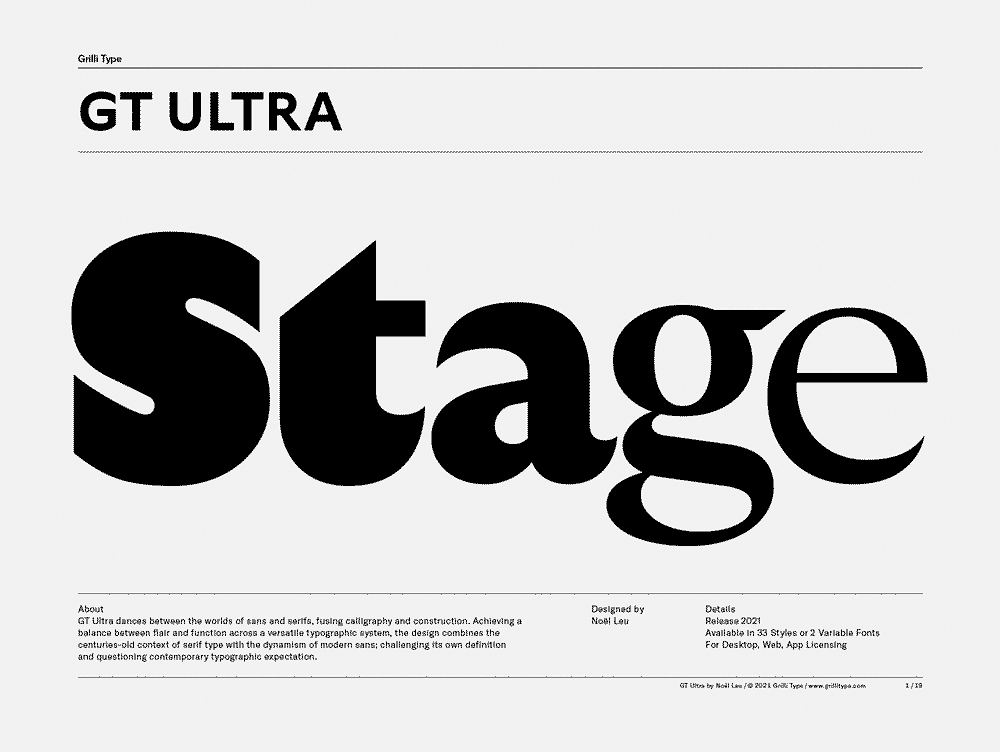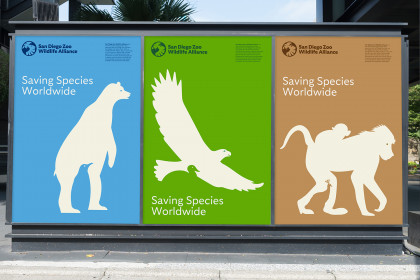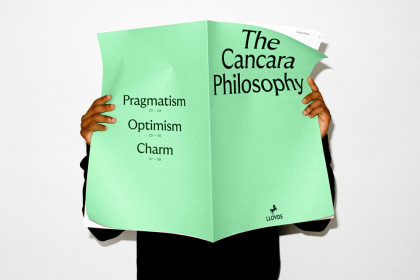GT Ultra
Family overview
- Standard
- Thin Italic
- Light Italic
- Regular Italic
- Bold Italic
- Black Italic
- Ultra
- Median
- Thin Italic
- Light Italic
- Regular Italic
- Bold Italic
- Black Italic
- Ultra
- Fine
- Thin Italic
- Light Italic
- Regular Italic
- Bold Italic
- Black Italic
- Ultra
Subfamilies
- Standard ThinPhysical parameters include the shape, size, stretch, and hair type of the ink brush; the color, color density and water density of the ink.
- Standard Thin ItalicShe picked a hearty typeface that made the words declarative and secure and placed them on crew-neck shirts on the flat cotton plane across the sternum.
- Standard LightEarth is a Goldilocks planet, not close enough to its star to be burned to a crisp, not far enough away to be locked in eternal ice.
- Standard Light ItalicLast weekend, stylish crowds lined up outside the same building, now the KW Institute of Contemporary Art, to celebrate the institution’s 30th birthday
- Standard RegularDinner parties were more fun when you could lie.
- Standard Regular Italic“Resistance and change often begin in art. Very often in our art, the art of words.” — Ursula K. Le Guin
- Standard BoldThese 3 styles’ stroke orders vary more, sometimes creating radically different forms.
- Standard Bold ItalicMartha Graham’s dancing and choreography exposed the depths of human emotion through movements that were sharp, angular, jagged, and direct.
- Standard BlackLaTurbo Avedon (b. 1988) is an avatar and artist creating work that emphasizes the practice of non-physical identity and authorship.
- Standard Black Italic62 expressions in one of these will have a directly analogous, or dual, expression in the other.
- Standard UltraThe complement of the union of two sets is the same as the intersection of their complements.
- Settings
Typeface information
GT Ultra dances between the worlds of sans and serifs, fusing calligraphy and construction. The versatile typographic system combines the centuries-old context of serif type with the dynamism of modern sans; challenging its own definition and questioning contemporary typographic expectation.
Typeface features
OpenType features enable smart typography. You can use these features in most Desktop applications, on the web, and in your mobile apps. Each typeface contains different features. Below are the most important features included in GT Ultra’s fonts:
- SS01
- Alternate g
Aggregates
Typeface Minisite
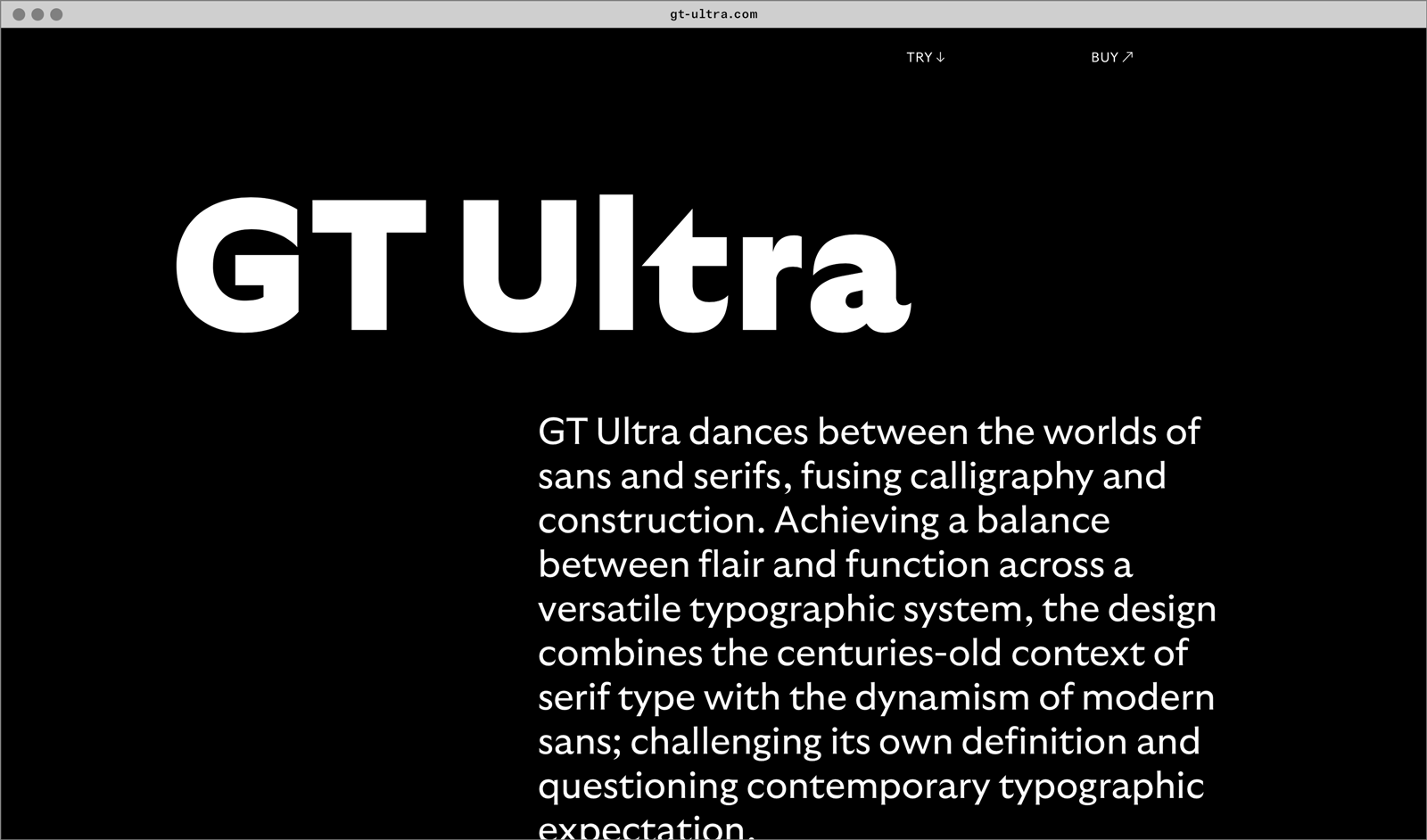
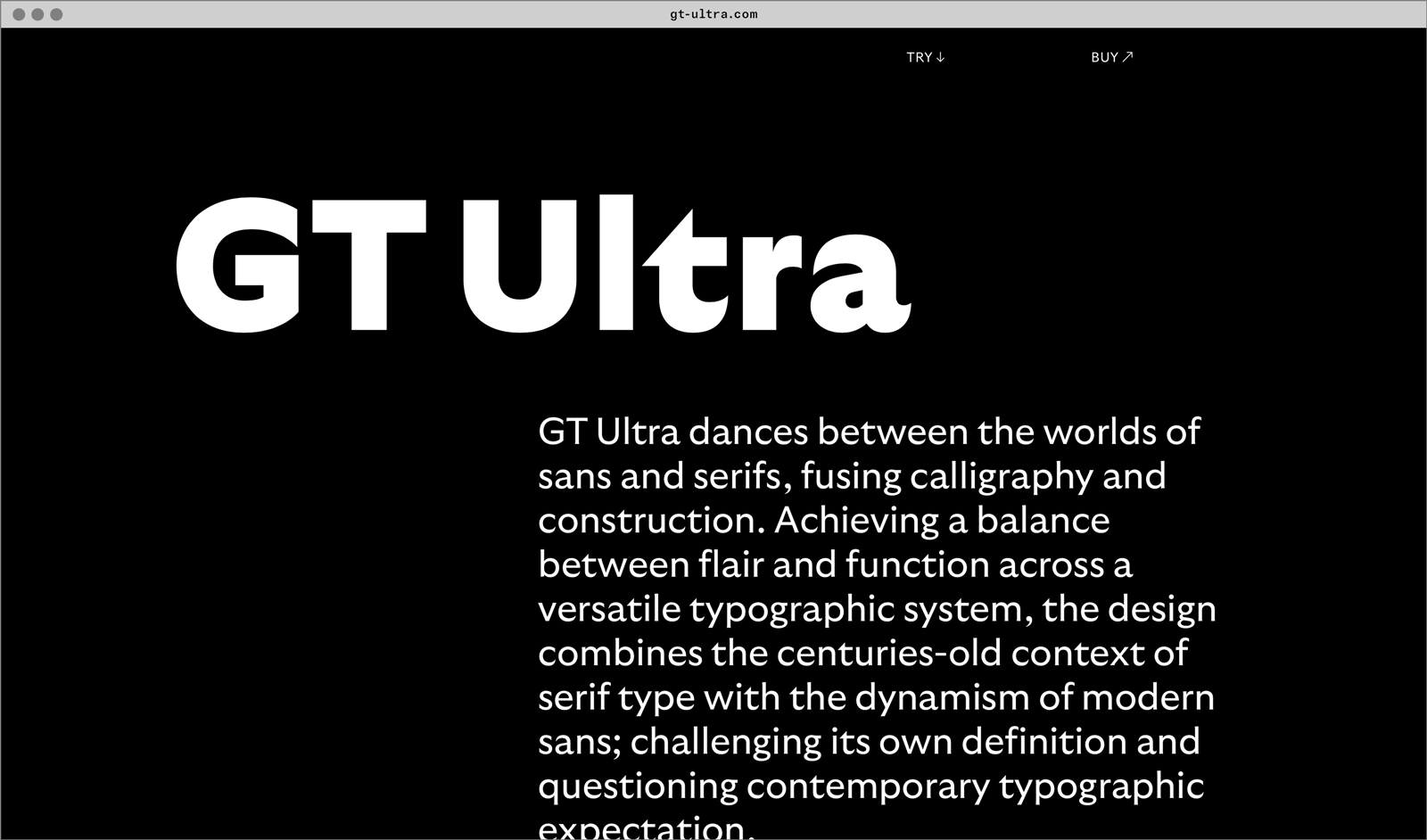
- Visit the GT Ultra minisite to discover more about the typeface family’s history and design concept.
GT Ultra in use
